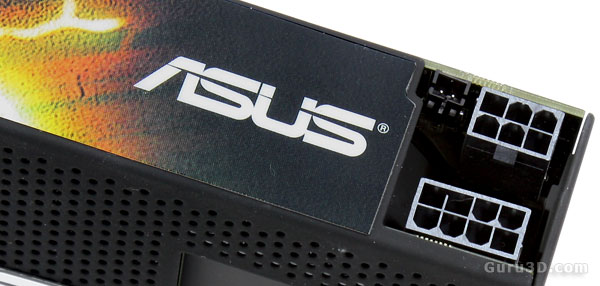Photos - ASUS GeForce GTX 295 (2)

That's 27 cm / 10.6 inches of pure hardcore unadulterated silicon right there. It weighs quite a lot too. This new-born child weighs in at two, maybe three pounds.

Optimal airflow inwards is important. The cooler would like to get the best possible airflow and this is why you see a meshed plate, allowing more air to flow. That looks a little freaky deaky. But again, the overall design is just really nice.

High-end cards need a lot of power. The GeForce GTX 295 comes with a 289 watt TDP (peak wattage). Since your motherboard can only deliver 75 watts, you'll need to hook it up to a PSU with enough AMPerage and as such you will need to connect both an 8-pin and 6-pin PCIe power header.
289W / 12v = 24 AMPs. So bear in mind that you'll need a 6-pin and an 8-pin 12V power connector with enough power (preferably 20 AMPs per 12v connector and thus rail). Don't go cheap on your PSU. They are so important.
In combo with a fairly high end system I recommend a ~700W PSU at minimum.

No longer hidden behind a rubber clip, the SLI connector. You'll have one SLI finger only as your board is already SLI'ing internally with two GPUs. But one finger does mean that you inevitably can pursue Quad-SLI if you'd wish such a thing.

Bragging rights: alive and working in the test system. Seriously, these are always the coolest photos, aren't they? The card has LEDs on the front panel, I like it. I'm an LED whore though. Enough trash talk. Let's head over to some actual benchmarks and see what the GeForce GTX 295 has in store for us performance wise.
